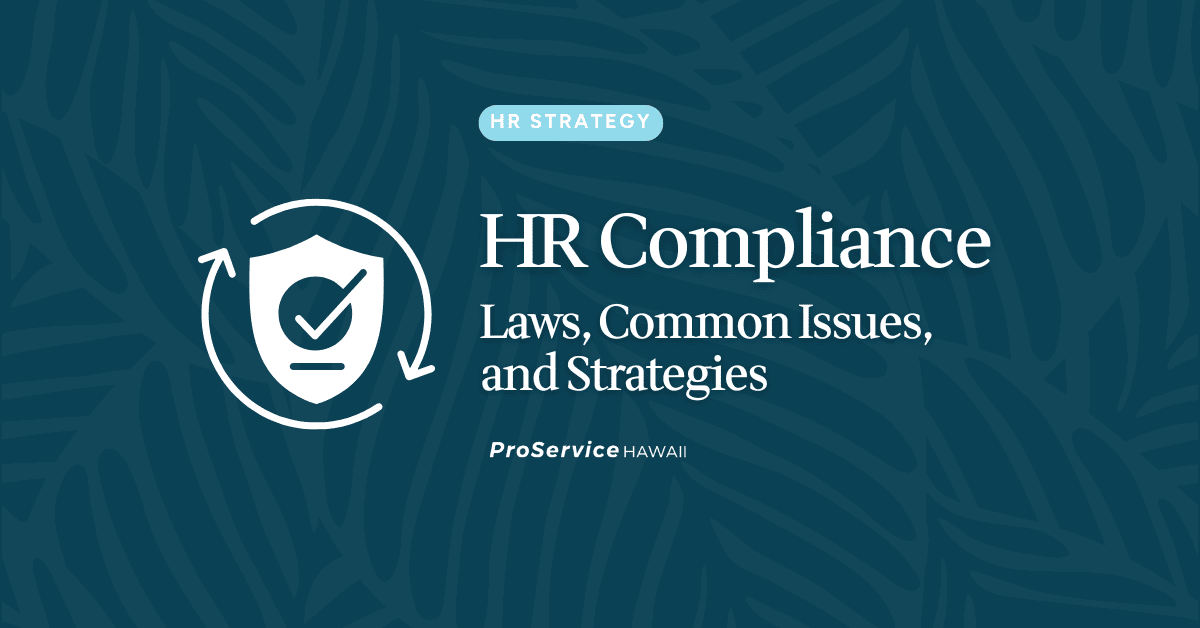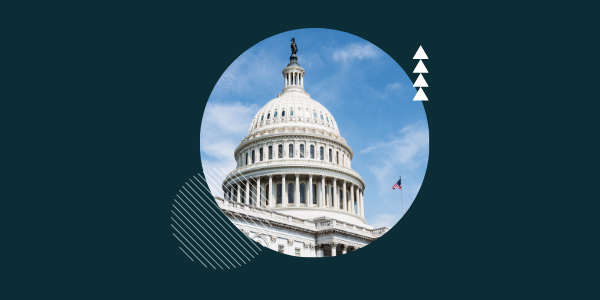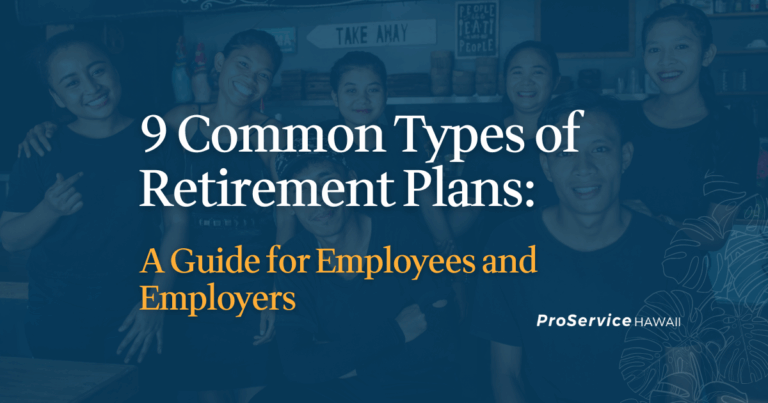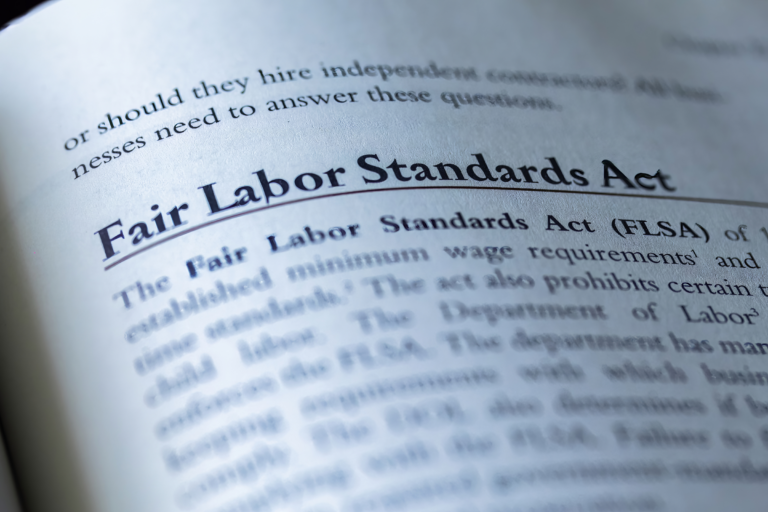What is HR Compliance? Laws, Common Issues, and Strategies
Every organization, including yours, is governed by laws and regulations that influence hiring, compensation, workplace safety, and much more. Your company can’t afford to put compliance with these requirements on the back burner. Penalties, lawsuits, and reputational damage are only the tip of the iceberg for businesses that fail to stay on top of their legal obligations. Poor compliance can also erode employee trust, make it harder to attract top talent, and tank your organization’s bottom line.
Thankfully, a quality HR compliance program, whether carried out internally or through an HR outsourcing vendor, can avoid these consequences and help give your company a reputation that outshines competitors. Let’s take a look at what HR compliance entails and how your company can stay compliant without breaking the bank.
HR Rules Change. Stay Ahead.
Defining HR Compliance
HR compliance involves aligning your organization’s employment practices with federal, state, and local laws. It requires understanding the legal requirements that apply to your company and then applying that knowledge to your company’s day-to-day operations. Ongoing compliance also involves monitoring the ever-evolving legal landscape for new laws and changes to existing requirements.
HR compliance touches on almost every aspect of your business. Your company must calculate wages, withholding, and deductions correctly, as mistakes in payroll can result in penalties from authorities and frustration from employees. Consistently providing required breaks and leave, avoiding discriminatory employment practices, and providing required benefits are just a few of the other compliance requirements organizations should be aware of.
Why is HR Compliance Important?
Prioritizing HR compliance is both a legal necessity and good business sense. Staying compliant steers your organization clear of fines, lawsuits, and other penalties that can drain time and employee morale in addition to money. A well-structured compliance program also sets consistent expectations for employees and managers while helping you avoid legal pitfalls before they become major issues.
Companies that prioritize HR compliance develop a reputation for fairness, safety, and integrity as well. This makes your workplace more attractive to both current team members and new candidates, improving both employee retention and recruitment. Staying compliant shows employees that you value both the letter and the spirit of the law, giving them confidence as they build a career and future with your business.
HR Compliance Laws and Regulations
HR compliance involves laws at the federal, state, and local levels that mandate fair treatment in the workplace, protect employee rights, and establish employer responsibilities. While the exact details vary by jurisdiction, every organization should understand the major areas of employment law and build compliance practices around them. Here are some of the most critical legal topics HR teams need to navigate.
Anti-discrimination
Anti-discrimination laws are designed to ensure employees are treated fairly and evaluated based on performance, not personal characteristics. At the federal level, Title VII of the Civil Rights Act of 1964 prohibits discrimination in any aspect of employment, including hiring, promotion, and pay, based on race, color, religion, sex, or national origin. Later amendments and court rulings expanded protections to include categories such as pregnancy as well as sexual orientation and gender identity.
Several other federal laws also touch on discrimination in the workplace:
- The Americans with Disabilities Act (ADA) requires employers to provide reasonable accommodations for qualified employees with disabilities, unless doing so would create undue hardship.
- The Age Discrimination in Employment Act (ADEA) protects workers aged 40 and older from being discriminated against due to age.
- The Equal Pay Act (EPA) mandates equal pay for equal work regardless of employee gender.
- The Lilly Ledbetter Fair Pay Act of 2009 extends the time frame employees have to file claims of pay discrimination to 180 days after receiving any discriminatory paycheck.
HR compliance with these requirements involves practices like auditing pay structures, documenting hiring decisions, and developing a workplace culture that supports fairness and inclusivity.
Wage and Hour Laws
Wage and hour laws control how employees are paid. The Fair Labor Standards Act (FLSA) is the foundational federal law in this area. It requires covered employers to pay at least the federal minimum wage to most employees, currently $7.25. It also mandates that non-exempt employees receive overtime wages at 1.5 times the regular rate for work in excess of 40 hours per week. The FLSA sets rules around record keeping and restrictions on child labor as well. State and local governments frequently go further than the FLSA. For example, Hawaii requires employers to pay a higher minimum wage than the federal standard.
HR must keep precise records of hours worked, classify employees correctly as exempt or non-exempt for purposes of overtime, and ensure employees receive all the wages they’re entitled to in a timely manner. Failing to do so can lead to back pay obligations, penalties, and costly audits.
Workers’ Compensation
Workers’ compensation laws ensure employees receive medical care and wage replacement if they’re injured or become ill due to work. Each state sets its own rules, but all except Texas require private employers to carry workers’ compensation insurance to cover these costs. Compliance involves not only securing appropriate coverage but also following reporting and claims management procedures to support injured employees and protect your organization from liability. HR plays a vital role in this area by managing injury reporting, processing claims, and promoting workplace safety to reduce risks.
Payroll and Tax
Handling payroll is one of the most complex parts of HR compliance. Employers must withhold the correct amounts for federal income tax, Social Security, and Medicare under the Federal Insurance Contributions Act (FICA), in addition to state income tax withholding and unemployment insurance contributions. State and federal laws also mandate how frequently employees must be paid, how and when final paychecks should be issued, and what paycheck deductions are permitted. Organizations must comply with IRS reporting obligations as well, such as filing a W-2 for each employee and a 1099-NEC for each independent contractor.
Health Insurance and Benefits
Health insurance and other employee benefits are another critical part of HR compliance. The Affordable Care Act (ACA) requires employers with 50 or more full-time employees to offer affordable health coverage that meets minimum essential coverage standards. These employers must also report health coverage and enrollment details to the IRS annually while providing employees with information about offered health coverage through Form 1095-C. In addition to the ACA, many states impose their own rules. For instance, Hawaii operates under the Prepaid Health Care Act, a law requiring most employers to provide health insurance to employees working at least 20 hours per week.
Benefits compliance doesn’t end with health insurance. It also involves managing retirement plans, disability coverage, and voluntary benefits in accordance with federal and state laws. PEOs offer strong partnerships with benefit providers and can help your company stay compliant while offering a competitive benefits package.
Safety
Workplace safety laws are designed to protect employees from hazards and prevent work-related injuries. The Occupational Safety and Health Act (OSHA), enforced by the Occupational Safety and Health Administration, requires employers to provide a safe and healthful working environment. This includes maintaining hazard-free workplaces, training employees on safety protocols, keeping accurate records of injuries and illnesses, and posting required OSHA notices. HR plays a critical role in maintaining compliance with safety requirements by ensuring employees know their rights, supervisors follow safety protocols, and the company maintains the proper documentation to demonstrate compliance.
Immigration
Immigration compliance focuses on verifying the eligibility of employees to work in the United States. Under the Immigration Reform and Control Act (IRCA), employers must complete a Form I-9 for every new hire, confirming their identity and authorization for employment. Employers are required to review acceptable documentation provided by the employee and retain the I-9 form for a set period. Employers that participate in E-Verify, an online system for verifying I-9 information, can use it to confirm the work eligibility of employees by comparing provided information against federal records.
Leave
Leave laws ensure that employees can take time away from work for medical, family, or personal reasons without jeopardizing their jobs. The federal Family and Medical Leave Act (FMLA) requires covered employers to provide up to 12 weeks of unpaid, job-protected leave each year for specific situations, such as the birth of a child or recovering from a personal health condition.
State laws often expand on these protections. For example, Hawaii’s Family Leave Law (HFLL) applies to employers with 100 or more employees and provides up to four weeks of unpaid leave per year to care for a child, spouse, parent, or reciprocal beneficiary with a serious health condition. This law works alongside the FMLA but differs in application, so employers in Hawaii must carefully navigate both sets of requirements.

Strategies for Improving HR Compliance
Staying compliant with all the requirements covered above may feel daunting, but don’t worry. By following the practices below, your company can reduce compliance risks while creating a more transparent and trustworthy workplace.
Practice Clear, Frequent Communication with Employees
Employees need to understand their rights, responsibilities, and the policies that guide workplace conduct. Transparent communication about leave, pay, benefits, safety, and other important topics helps workers at all levels follow relevant guidelines and report potential issues before they escalate.
Beyond holding live discussions on key HR topics and providing access to helpful resources, HR should establish multiple channels for employees to reach out with questions or concerns. This two-way communication helps identify potential compliance gaps early while showing employees that your organization truly values their input.
Prioritize Training
Training for leaders and other employees is an essential part of staying compliant. Workplace harassment training, safety courses, and other programs help employees understand the standards they’re expected to uphold. Supervisors and HR staff also need specialized training in areas like wage and hour rules, leave management, and interviewing practices to ensure they apply the law correctly. Partnering with a PEO can simplify the process of keeping team members up to date with changing laws and regulations, as can adopting a learning management system (LMS).
Evaluate and Audit Your Current Policies and Practices
Effective compliance relies on clear, well-drafted policies that are easily accessible to employees. These guidelines should be regularly updated to reflect changing laws and address issues with current practices. Policies aren’t worth much if they aren’t translated into action, however, so your company should also audit its practices to ensure reality matches up to what’s on paper. This can involve reviewing payroll accuracy, assessing leave tracking systems, or evaluating hiring procedures against anti-discrimination standards. Beyond highlighting current gaps, audits also offer a chance to streamline processes and simplify ongoing compliance by automating manual workflows that are prone to human error.
Stay on Top of Changing Legal Requirements
Labor laws aren’t static. Federal, state, and local governments frequently issue updates affecting everything from overtime requirements to leave policies. Missing even a small change can lead to costly mistakes, such as misclassifying employees or failing to provide mandated benefits. While staying informed is critical, it can be an overwhelming task when your organization is already juggling day-to-day business responsibilities.
To keep pace, your company should set up reliable systems for monitoring legal changes. This might include subscribing to labor law updates, working with legal counsel, or using HR compliance software that provides automatic alerts. Of course, your company can sidestep this complexity by working with an experienced, dedicated HR outsourcing vendor.
Work with a PEO
For many organizations, the most efficient way to manage compliance is to partner with a PEO. The best PEOs offer expert guidance on all aspects of HR compliance and stay ahead of regulatory changes, so your internal team doesn’t have to shoulder the burden. This allows organizations of any size to maintain compliance and avoid costly penalties or lawsuits. By working with a PEO, your company gains a trusted partner who ensures HR compliance is handled correctly, leaving your team free to focus on growth and strategic goals.
Ensure HR Compliance with Expert help
ProService Hawaii has unmatched experience protecting Hawaii businesses from the risks of noncompliance. ProService's team of HR compliance specialists offer guidance on everything from hiring and termination to payroll and dispute resolution. Thanks to ProService’s expertise when it comes to compliance and other key HR responsibilities, the majority of clients across 375+ industries save over 80 hours per month.
Don’t let compliance challenges slow your company down. Contact ProService to schedule a free consult or call Call us at 808-201-8137.to learn how its experts can handle HR compliance and de-risk your business.







